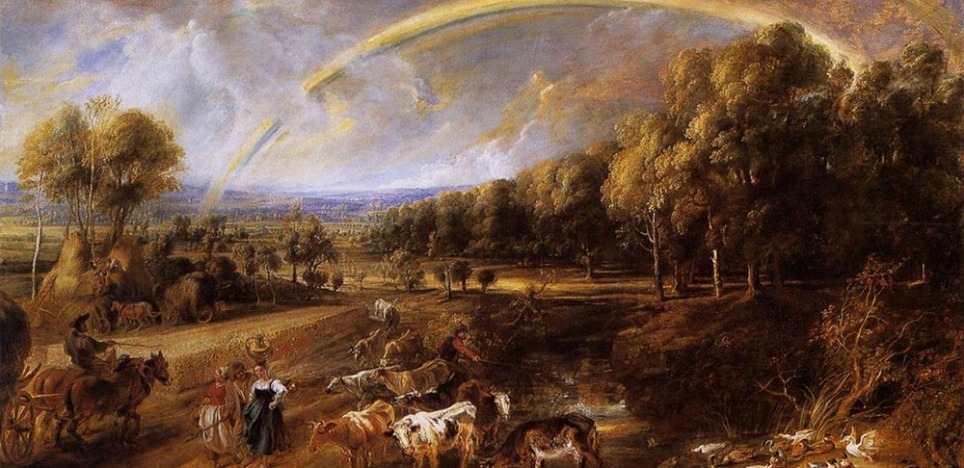The ground we walk on is sacred. Honoring the places in our lives thus becomes an important spiritual discipline requiring reverence and imagination.
In 1635, the artist Peter Paul Rubens (1577-1640) purchased the chateau of Het Steen, located between Brussels and Antwerp. He then painted "The Rainbow Landscape," an imaginary reconstruction of his estate. We can see in the overall design and in the delicious details that he considered it an idyllic place.
The painting immerses us in what looks like a late summer afternoon in Rubens' awesome paradise. It is the time of day when the cows are coming home and the ducks are frolicking in the stream. Peasants are taking in the harvest, and a milkmaid carries a pitcher on her head.
All of this activity takes place near a dark woods while up ahead lies a light-filled vision of lush land with a magnificent rainbow over it. For those living in seventeenth-century Europe, the religious reading of this painting was clear: the rainbow spoke of the covenant made between God and human beings after the flood and the harvest was meant to be interpreted as the just reward for the labors of the hands.
As we contemplate The Rainbow Landscape today, we are encouraged to steep ourselves in the details of a place, to savor its beauties and bounties, and to find in it intimations of the presence of the Divine. Or as Wendell Berry has put it: "My most inspiring thought is that this place, if I am to live well in it, requires and deserves a lifetime of careful attention."
